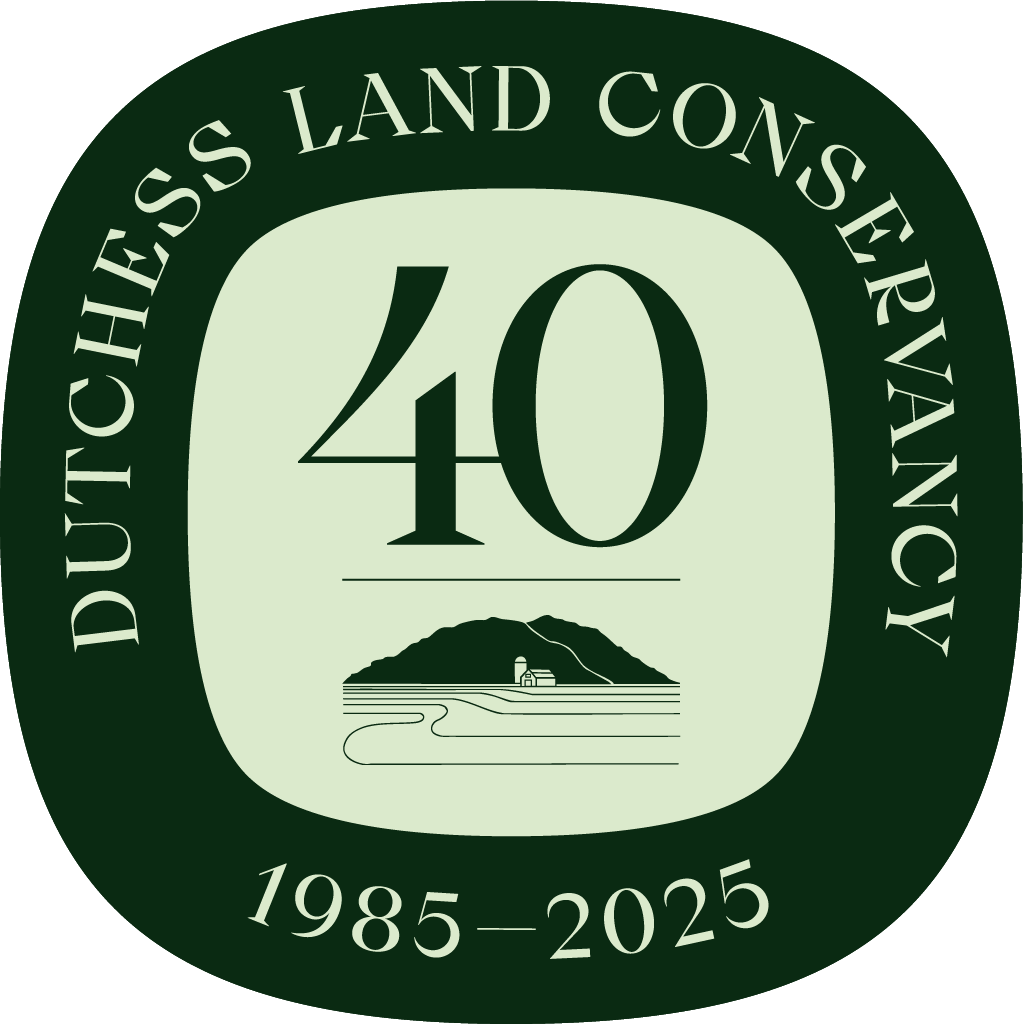Conservation Easement
“A conservation easement permanently restricts, or channels, future building only to those portions of the property where it can be accommodated without destroying visual and environmental qualities of the landscape. The open fields and woodlands we cherish in their present condition would be permanently preserved from development.” ~ Chauncey Stillman, September 1985A conservation easement is a voluntary legal agreement between a landowner and a land conservation organization, like the DLC, or public agency that is permanently binding on the land, no matter who owns it. Conservation easements restrict the use and development of a property in such a way as to protect specific conservation resources. The landowner retains all rights to own, sell, lease and use the land according to the provisions of the easement. Many easements allow limited future development to occur.
Once a conservation easement is placed, the DLC is responsible for monitoring it (and all of its other protected properties) to ensure that the landowner is in compliance with the easement. If a violation is found to exist, the DLC will make every effort to work with the landowner to attempt to resolve it. While a rarity, if necessary, the DLC can take legal action to correct it, although the DLC prefers to work with the landowner to resolve the matter collectively. In order to ensure that the DLC has the financial capability to monitor and enforce the easement, the DLC requests a one-time gift from the landowner that will be held in a restricted fund to help the DLC cover its costs to oversee the easement into the future.
If the easement is restrictive enough so that the property is diminished in value, this reduction in value may qualify as a tax-deductible charitable contribution for federal and state income tax purposes. Alternatively, landowners such as farmers can be paid for a conservation easement in connection with a purchase of development rights program.
Conservation easements are a widely used and a highly recommended tool for protecting open space and farmland. They conserve land while at the same time keeping it in private ownership and on the local property tax rolls.
Land Donations
Landowners can consider an outright gift of land to the DLC through our Trade Lands Program. If the land has unique resource values or is appropriate for public recreational use, the DLC will place a conservation easement on it and resell it. If the land does not have any significant conservation value (e.g. commercial property) then the DLC will resell the land unrestricted. Proceeds from a sale are used to further the DLC’s conservation mission. An outright gift of land often provides the greatest tax benefit for a landowner.Purchase of Development Rights
One of the most common ways of protecting farmland and open space is through a purchase of development rights (PDR) program. In a PDR program, a public agency or not-for-profit such as the DLC buys the development rights from a willing landowner and a conservation easement is placed on the property. PDR programs have proven to be a very effective tool for protecting farmland.Bargain Sale
Bargain sales involve the sale of land or a conservation easement to the DLC at a price less than fair market value. The seller may be entitled to an income tax deduction for the difference between the sale price and the fair market value as determined by a qualified appraiser.Conservation Easement Escrow Agreement
Since a landowner’s conservation easement benefits their neighbors by conserving land in the vicinity, neighbors often find it advantageous to execute easements jointly. A mechanism to coordinate this is the placement of signed conservation easements in escrow with the DLC or some other third party, to be recorded as a group when the landowners determine enough easements have been completed. This approach provides reassurance that landowners will not be alone in filing their conservation easements, thus ensuring protection of an entire neighborhood area.Deed Restrictions
Deed restrictions, also known as restrictive covenants, are voluntary private restrictions that limit the use and development of land and can include the same restrictions as those set forth in a conservation easement. However, these restrictions can only be enforced by the parties to the contract and/or specific adjoining landowners who directly benefit from the deed restrictions. They do not enjoy the same legal status of a conservation easement and are not afforded the same potential tax benefits. While deed restrictions may in some circumstances be eliminated by the mutual consent of landowners or through court action, it is extremely difficult to remove a conservation easement. A combination of deed restrictions and a conservation easement provides the strongest protection, because the parties to the restrictions, the adjoining owners and the DLC have enforcement rights, and the conservation easement enjoys a special legal status that makes it difficult to overturn in court.Conservation Land Planning
Conservation land planning is a consulting service the DLC offers to conservation-minded landowners who wish to balance limited future development of their land with the conservation of its natural, scenic, forested or agricultural resources. The DLC can help landowners select and implement appropriate conservation techniques and compatible development concepts. The DLC analyzes the property's resource values and real estate potential. Based upon this analysis, the landowner can strike an acceptable balance between conservation and development.If you are interested in learning more about your land conservation options, please contact us at (845) 677-3002.
This information does not constitute legal or tax advice and DLC strongly recommends that you discuss your land conservation options with legal and tax professionals.


 © Dutchess Land Conservancy. All Rights Reserved.
© Dutchess Land Conservancy. All Rights Reserved.








